BEST PLACES TO VISIT IN FES MOROCCO
At more than a thousand years old, Fez is often considered the spiritual heartland of Morocco. The old medina, Fez al-Bali, is a web of narrow streets and alleys made up of houses and souks, the plan of which has largely remained the same for centuries. It may be a cliche, but the old city really is an assault on the senses; the smell of incense, leather, coffee and various spices, fills the air, along with the noisy hum of shoppers and sellers alike. Beautifully tiled water fountains for ablution can be seen at various points walking through the medina, while street-sellers line the narrow streets with their carts displaying goods to sell. With a long history of craftsmanship, walking through the souks one can see various crafts, such as wood carving, being practised. Best advice if you’re planning to visit? Get lost in the medina- you will undoubtedly find something of interest. But if you want a little more structure for your trip, here are some highlights of Fez medina.
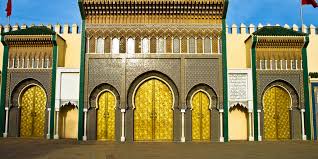.jpg)
The Qarawiyyin Mosque and University
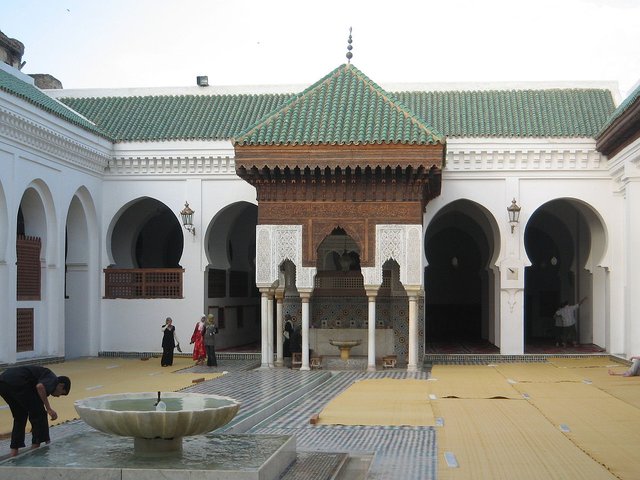
The Qarawiyyin is the beating heart of Fez Medina, with a steady stream of worshippers flowing in and out of its doors throughout the day. The mosque is so large that, coupled with the general close proximity of buildings within the Medina, it is not easy to view the mosque as an independent structure, or see where one building begins and another ends. This simply reinforces the sense that the Qarawiyyin is the centre of the Old City. From a distance, viewed from the surrounding hills of Fez, the mosque is unmistakeable, with its green pyramidical roof setting it apart from its surroundings. Numerous doors, on all sides of the building, invite worshippers inside; each is crowned with an intricately carved wooden archway. Inside, its courtyard is decorated with carved stucco and wood-work, contrasted with the bare, plain white walls of the interior of the mosque.
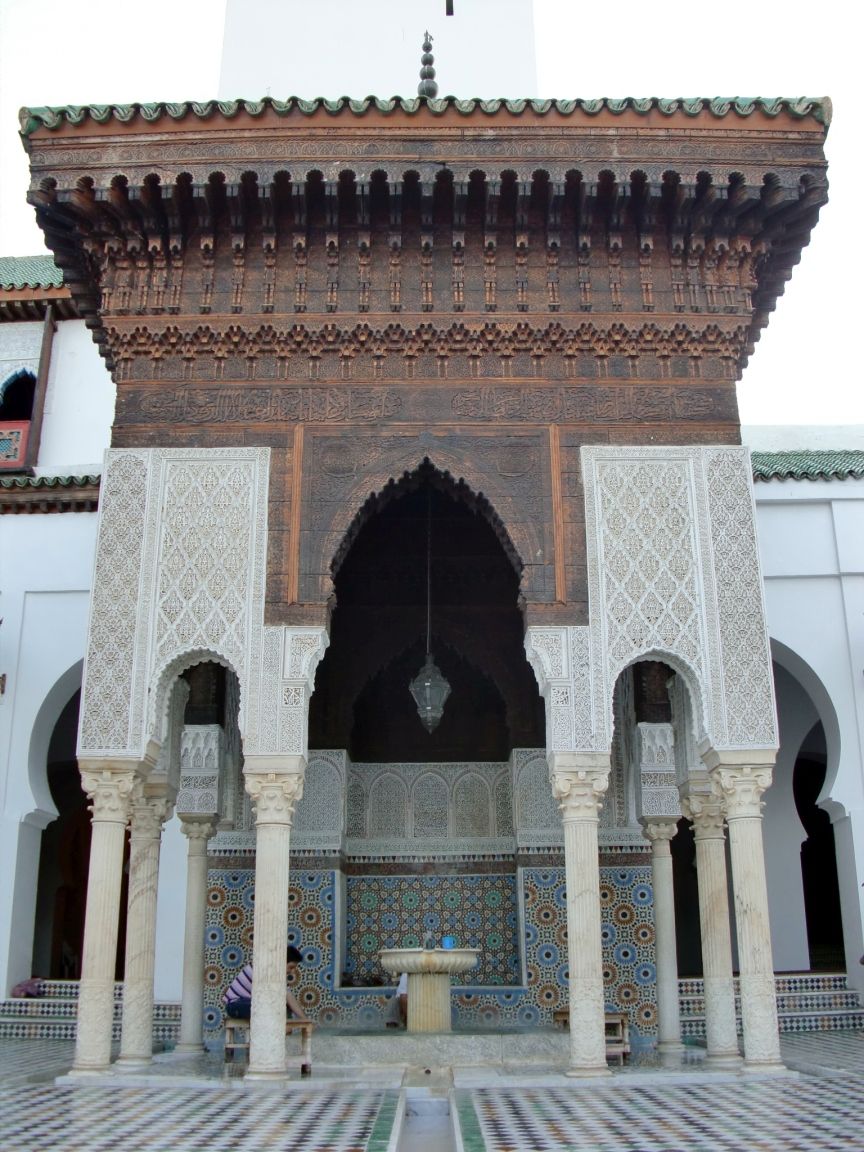_in_the_city_of_Fes%2C_Morocco_(Image_1_of_9).jpg)
Interestingly, the floor is lined with reed mats instead of thick carpet, adding to its austere appearance. The busy, narrow streets of the Medina outside, contrast heavily with the light, airy space of the mosque courtyard. I was struck by the sense of calm, as well as the laid back nature of worshippers; children played happily in the wudu fountain in the courtyard, while men and women sat reclining against pillars, perhaps taking refuge from the heat outside. Founded by Fatima al-Fihri as a madrasa in 859 AD, the Qarawiyyin eventually became one of the leading centres of learning in the Islamic world. Operating as both a mosque and university, the building was expanded several times over the centuries and can accommodate up to 20,000 worshippers. It is considered one of the oldest continually running universities in the world.
Madrasa al-Attarine
.jpg)
Located in the Souk al-Attarine, the spice and perfume market, from which it takes its name, the Madrasa al-Attarine was founded by Uthman Abu Said in 1325. In close walking distance to the Qarawiyyin, the madrasa contains rooms for teaching and a small mosque, set around its central courtyard.
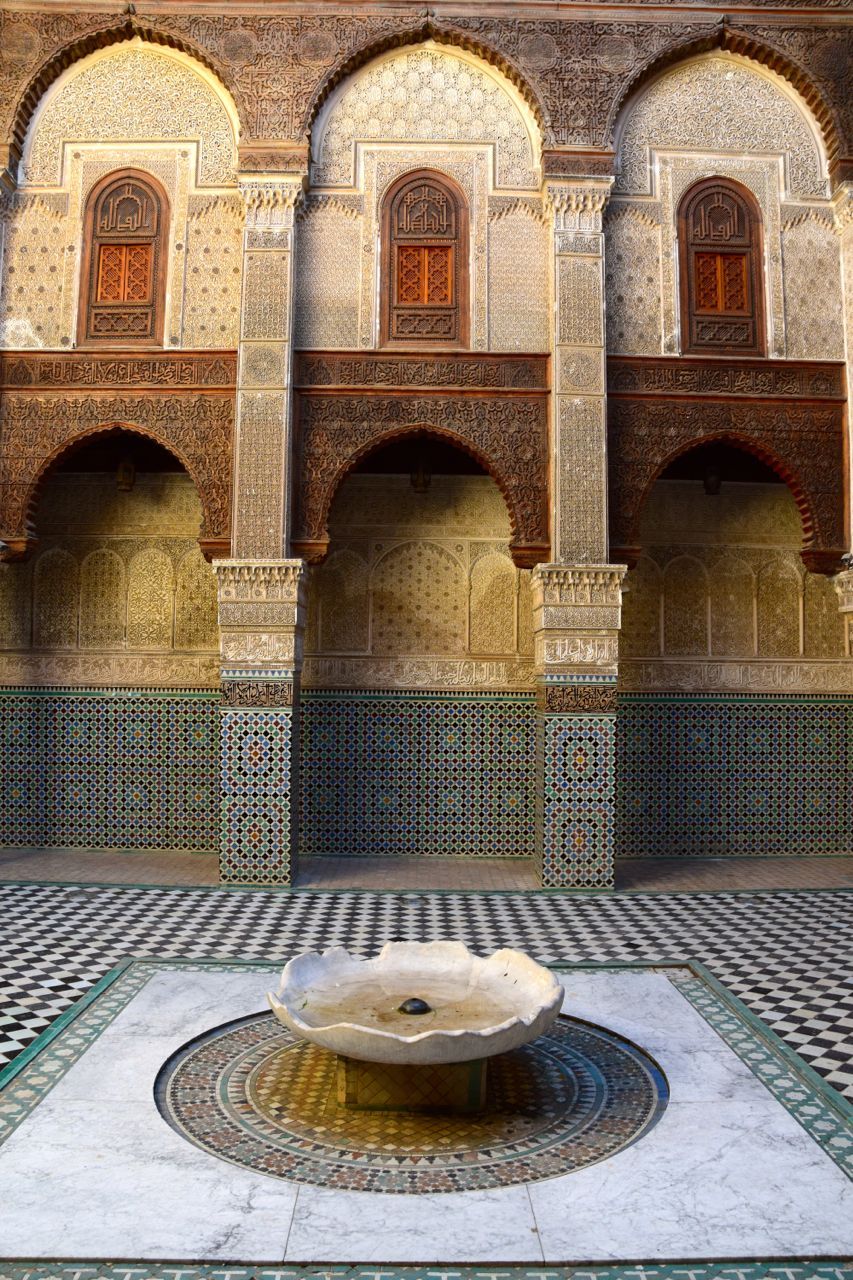.jpg)
Chaouwara Tanneries
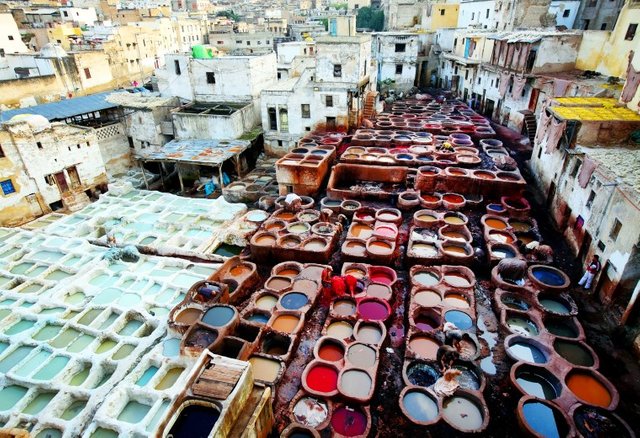
Little has changed in the process of dying leather at the Chaouwara/leather tanneries of Fez in more than 500 years. The tanneries are surrounded by shops selling leather goods; here visitors are offered the chance to view the tanneries from above from a balcony or roof-top. Shop staff give an overview of the dying process, as the distinct odour of leather and dye fills the air.
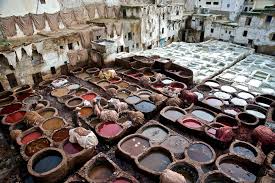.jpg)
The Mosque and Zawiya of Shaykh Ahmad Tijani
.jpg)
Shaykh Tijani (1735–1815) was a prominent scholar and founder of the Tijani tariqa (order). The zawiya was (and still is) a meeting place for his students and followers of the tariqa. It is also his burial place. The building has an exterior decorated much like the courtyards of Moroccan madrasas, with glazed tile-work and carved stucco and wood.
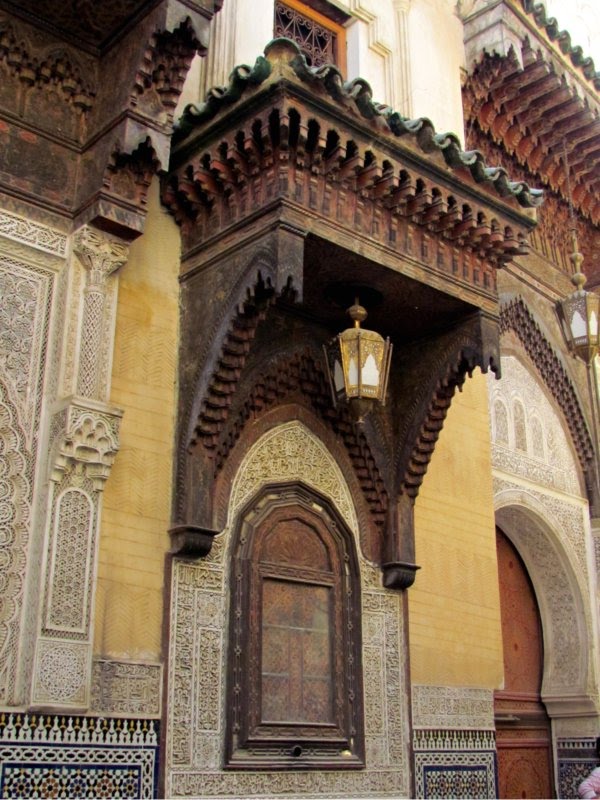
Zawiya of Moulay Idriss II
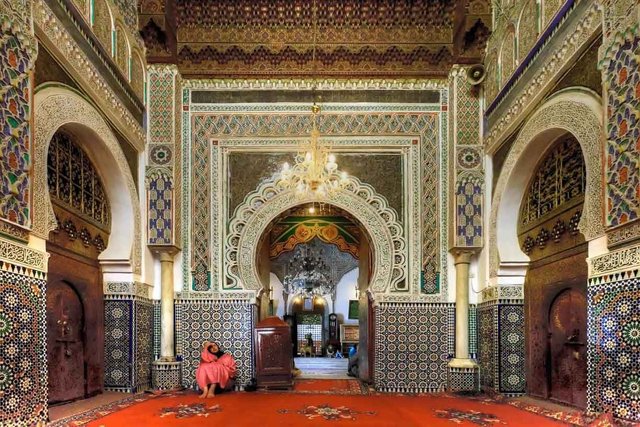
Ruler of Morocco from 807 to 828, Moulay Idriss is credited as the founder of the city of Fez and considered its patron saint. The building, housing a mosque and the tomb of Moulay Idriss, dates back to the 9th century. Many consider it a blessed place, visiting the site for baraka (blessings).
Marinid Tombs
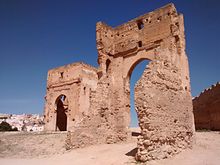
On one of the hilltops that surround the Old City stand the tombs of the Marinid rulers. Although the tomb ruins are not themselves particularly noteworthy, the view offered from the hilltop makes the uphill climb worth the effort.
Madrasa Bou Inania
.jpg)
Built by Marinid sultan Abu Inan Faris between 1350 and 1357, the madrasa has undergone extensive restoration in recent years. Unlike most other Moroccan madrasas which only contain a small mosque, the Bou Inania is a complete mosque in itself, along with its own green-tiled minaret. The last madrasa to be built by the Marinids, who were known for their artisanship, the Bou Inania became an important religious institute in Fez and Morocco as a whole. Inside, its courtyard is decorated with zellij tile-work and carved stucco that is typical of Moroccan madrasas, along with cedar-wood on the tops of walls and ceilings. Arabic calligraphy is inscribed throughout. Opposite the madrasa is the Dar al-Magana, a water clock also built by sultan Abu Inan. The clock, no longer in use, once signalled the hour of the day when metal balls were released from twelve small doors, into brass bowls on the lower beams.
original post in: www.sacredfootsteps.org/2014/12/02/7-places-to-visit-in-fez/